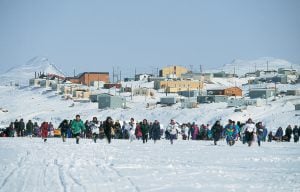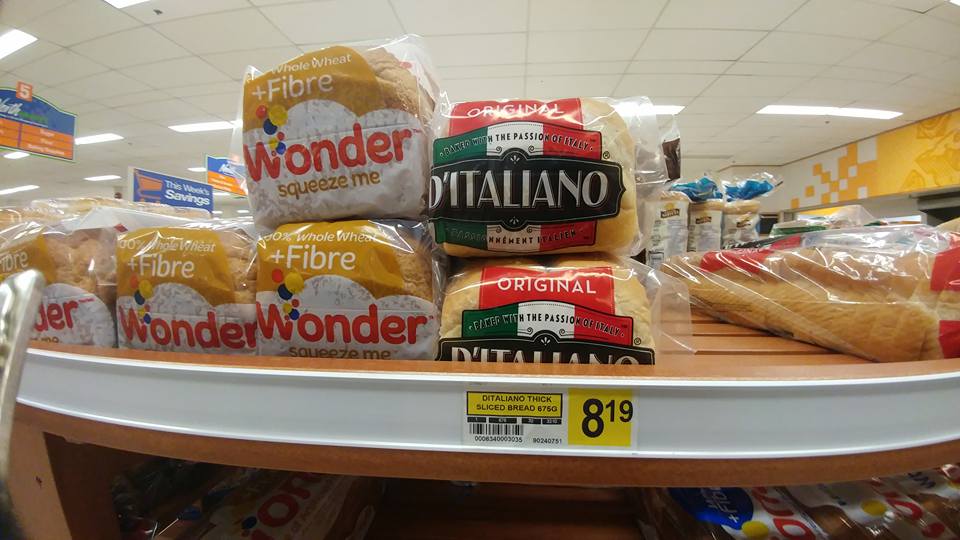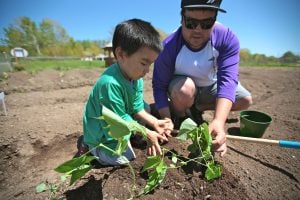
History
Throwback Thursday: Nunavut up and running
On April 1, 1999, Canada’s youngest population took control of its largest territory. Here’s how Canadian Geographic covered the story.
- 2880 words
- 12 minutes
This article is over 5 years old and may contain outdated information.
People & Culture

Nunavut is affected more than any other province or territory by household food insecurity, and needs remedial action, says a report published by the Conference Board of Canada last week.
The territory received a D grade for household food security for youth and adults aged 12 and older in the board’s Canada’s Food Report Card 2016: Provincial Performance, which compares 63 food performance metrics organized around industry prosperity, healthy food and diets, food safety, environmental sustainability and household food security. The Northwest Territories received a B in the latter category, while Yukon and all the provinces received an A. The grades were based on 2011-12 Statistics Canada data.
The report says that Nunavut is also the nation’s weakest performer on Indigenous food security, with 51 per cent of people experiencing low or very low levels of food security. “Inuit food insecurity is increased by climate change and environmental change, such as thinning of ice cover and altered animal migration routes,” the report notes, adding that “The eroding
interest in, and increasing costs of, hunting traditional or country food are also factors.”
The report does not make recommendations about what remedial action should be taken. “We provide a benchmark and try to raise awareness of the issue,” said Jean-Charles Le Vallée, one of the report’s co-authors and the associate director of the board’s Centre for Food in Canada. “But an example of something that could be done is to take a basic right-to-food approach that would support the hunting-gathering communities in Nunavut. There’s also evidence that there’s a need to make programs like Nutrition North [a federal government food subsidy program] more efficient and effective.”
Vallée also said he supported taking a closer look at the role social assistance plays in food insecurity in Nunavut, an issue long highlighted as important by Valerie Tarasuk, a professor in the department of nutritional sciences at the University of Toronto and the principal investigator at PROOF, an interdisciplinary team of researchers that studies household food insecurity in Canada. “What we’re seeing in Nunavut is that people don’t have enough money to make ends meet,” said Tarasuk. “It means taking a look at the income source of people there compared to the cost of living and making adjustments. Where do we start? Well there’s some pretty low-hanging fruit. Look at social assistance.”
Tarasuk cited PROOF’s 2014 report Household Food Insecurity in Canada, which found that 60.9 per cent of households in Canada whose major source of income was social assistance were food insecure. In Nunavut, she said, 83.3 per cent of households reliant on social assistance were food insecure, the highest rate in the country.
With the territory already having the nation’s highest prevalence of food insecurity (46.8 per cent) and the highest prevalence of children living in food-insecure households (60 per cent), Tarasuk called the food insecurity situation in Nunavut a national crisis. “There’s no question about what this can do to your health and wellbeing — the effects on those children will be lasting,” she said. “I think that to have a subpopulation of this country in such straits is not just a Nunavut problem but a problem for all of us.”
Are you passionate about Canadian geography?
You can support Canadian Geographic in 3 ways:

History
On April 1, 1999, Canada’s youngest population took control of its largest territory. Here’s how Canadian Geographic covered the story.

People & Culture
Gardeners dig into a history of resilience to feed people during COVID-19

People & Culture
The story of how a critically endangered Indigenous language can be saved

People & Culture
Here are a few of the ways community-led projects, government programs and other organizations are helping to feed northern populations